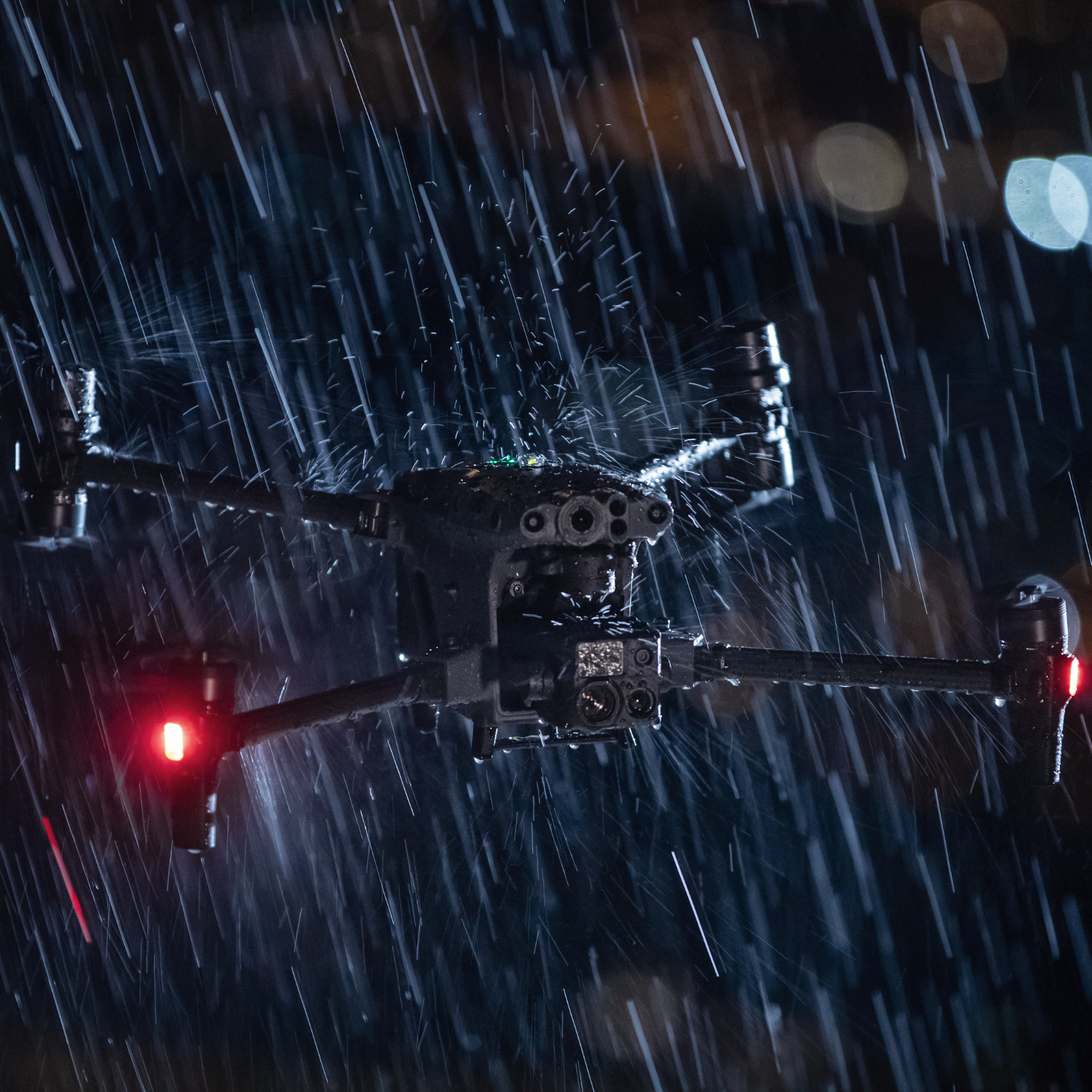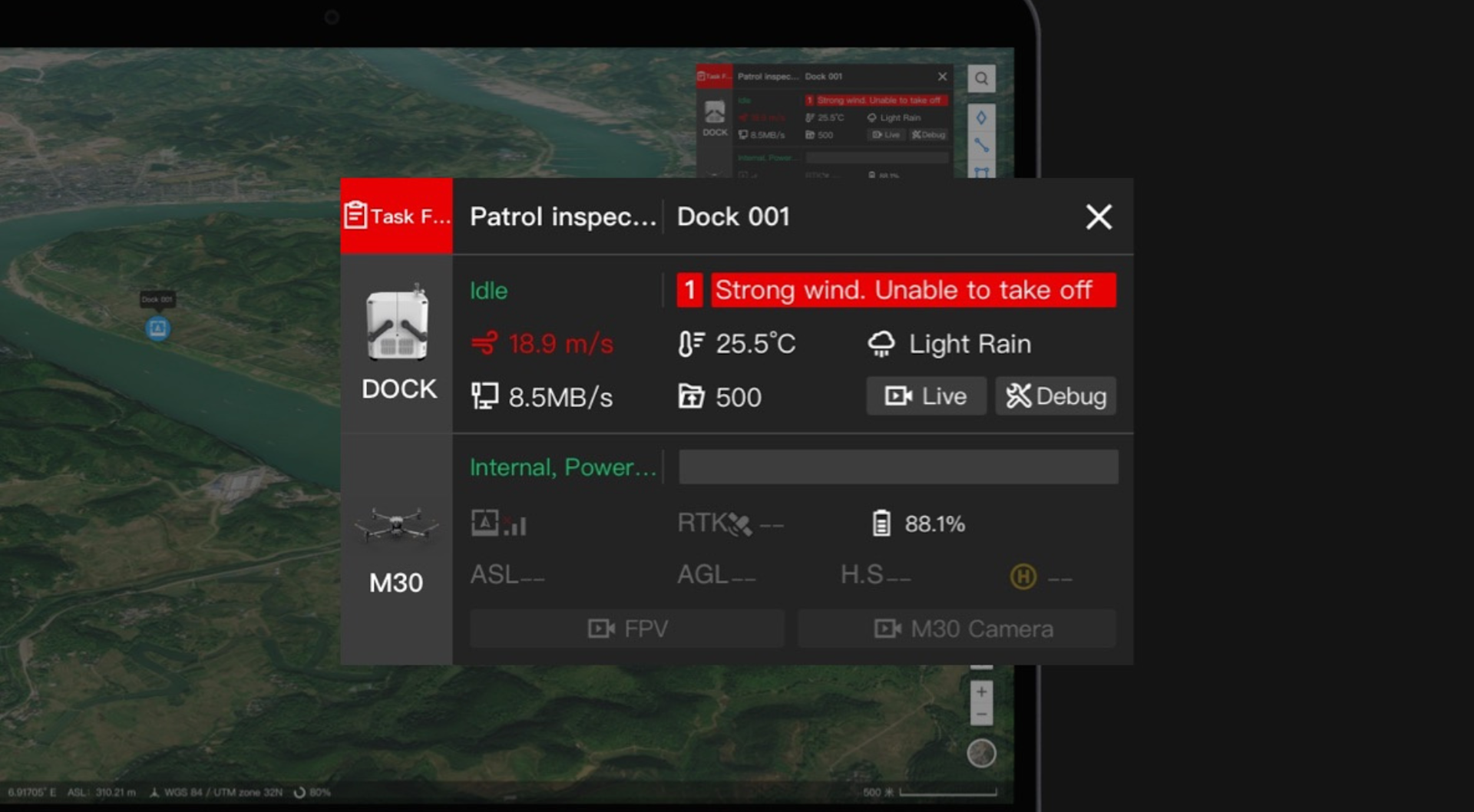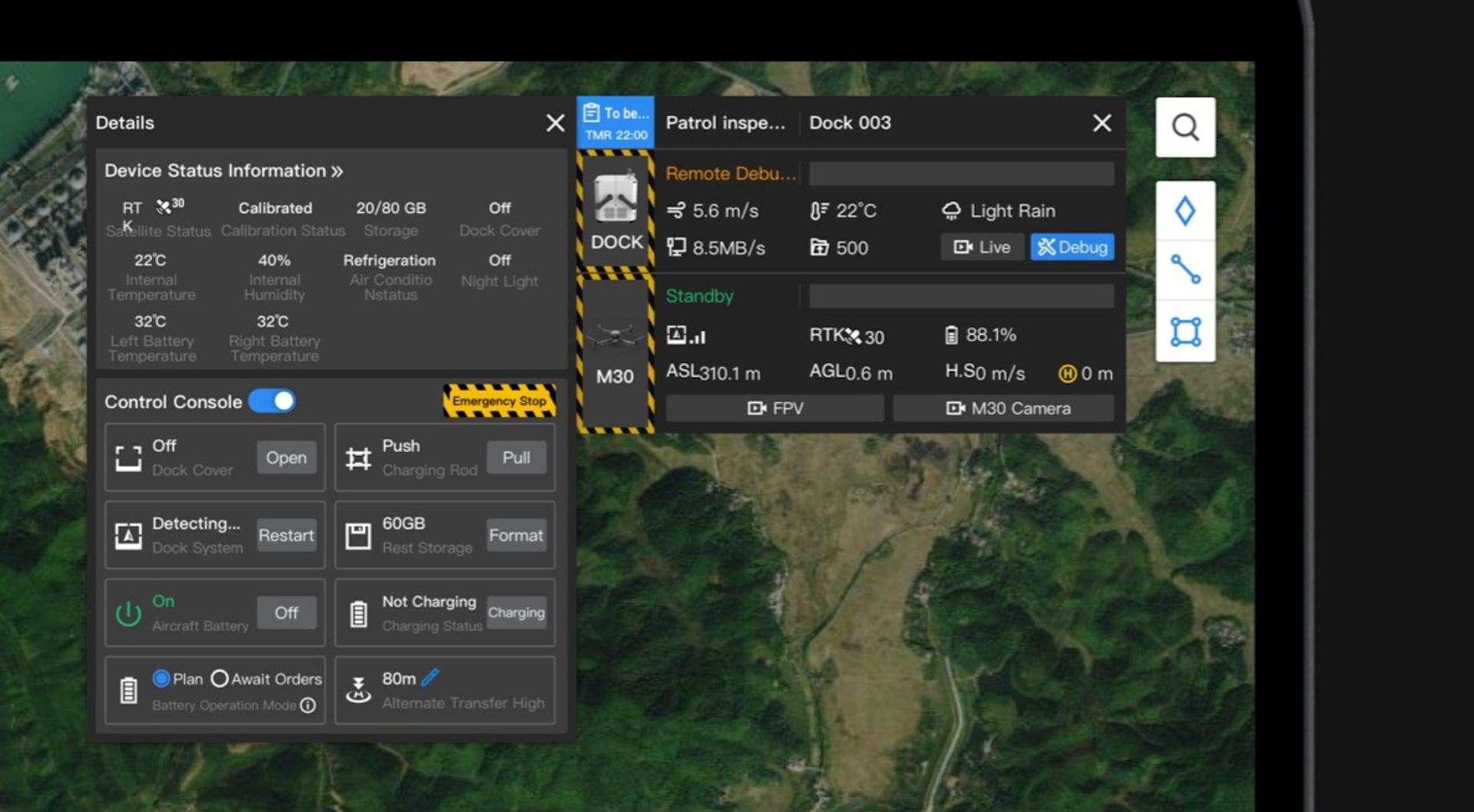
Products
How Weatherproof Is The DJI Dock?
The DJI Dock is a weatherproof drone in a box. Find out how this rugged solution enables drone operations in the most difficult conditions and watch a video showing the Dock being put through a series of vigorous weather tests. ... Read More

The DJI Dock is a weatherproof solution, built to handle extreme conditions;
Video shows DJI putting the Dock through a series of rigorous weather tests;
Beta testing has been conducted in more than 50 locations to ensure the Dock operates smoothly in varying environments and terrains. 1.5million flights have been conducted since launch;
The Dock's core components are IP67-rated, making it dust-tight and capable of handling heavy rainfall - even when the docking station's doors are open;
This drone-in-a-box system has surge protection against lightning, can endure temperatures from -35°C to 50°C, and the M30 drone (Dock version) can operate in wind speeds of up to 33.5 mph;
Integrated weather station prevents the drone from taking off if the weather is too severe.
Drenched in water, covered in dust, vigorously shaken, and subjected to extreme temperatures - this DJI video shows the rigorous tests that the DJI Dock has been subjected to to verify its ability to handle the toughest weather conditions.
Withstanding hostile environments is especially important for a drone-in-a-box solution, engineered to facilitate round-the-clock and persistent operations and spend a vast amount of time exposed to the elements.
And the Dock duly delivers - engineered to handle rain and wind, as well as freezing and scorching temperatures.
Freda Peng, Global Solutions Engineering Director of DJI Enterprise, said: "Our main goal with the Dock was to create something reliable - even for BVLOS (beyond visual line of sight) operations.
"The DJI Dock is designed to operate outdoors, unattended for long periods of time where extreme weather conditions such as wind, rain, snow, haze and humidity are common place.

"Our engineers have worked their brains to come up with various waterproof and dustproof designs to achieve the Dock's final IP rating. This includes modular designs, drainage designs, water sensors, and more."
As well as being subjected to reliability tests in simulated environments, DJI has conducted Beta testing in more than 50 locations to ensure the Dock operates smoothly in varying environments, terrains, and industries. Since its launch in March 2022, 1.5 million flights have been completed.
DJI Dock: A Weatherproof Drone In A Box
The DJI Dock is a rugged and robust drone in a box solution.
IP Rating
First off, it can withstand rain and dust thanks to its IP55 overall protection rating, while its core components are IP67-rated.
This means it can handle conditions like this:
The above video makes for impressive viewing. But what does the Dock's IP-rating - which measures how resistant it is against solids and water - mean in technical terms?
The IP55 rating permits the Dock to limited amounts of dust and low pressure jets of water from any angle.
However, the IP67 rating for its core-components takes things a step further, meaning they are dust tight and can be immersed in water between 15cm and 1 metre deep for 30 minutes.
It means that the Dock is waterproof, even when the doors are open under rainy skies: A crucial aspect for a remotely-located drone-in-a-box solution.
Temperature
As well as its ability to handle wet weather, the Dock has been engineered to withstand a range of extreme temperatures.
Thanks to its built-in TEC air-conditioning, this rugged docking station can handle temperatures ranging from -35°C to 50°C, while the M30 Series dock version drone can operate in conditions ranging from -20°C to 50°C.
To ensure operational safety, DJI Dock will enter standby mode when the temperature goes below -20°C, and resume flight missions when the temperature goes back up.
The Dock's climate-controlled interior helps the drone’s batteries reach optimal temperatures for safe charging - enabling the aircraft to automatically power up on return from a mission, ready for its next deployment.
Depending on the temperature, the Dock can charge the drone from 10% to 90% in just 25 minutes. It's worth noting that, as the temperature increases, battery cooling time will increase and lengthen downtime.
Wind Speed
The M30 Dock version drone has a maximum wind-speed resistance of 15m/s (33.5mph), and can withstand windspeeds of 12m/s (27mph) at take-off and landing.
According to the Beaufort Wind Scale, this gives the drone a Level 6 wind-resistance rating (strong breeze) at take-off/landing, and a Level 7 rating (near gale) during flight.
Lightning-proof
The DJI Dock is equipped with a surge protector which can prevent 40KA (8/20us) induction lightning, and meets EN/IEC 61643-11 TYPE 2 protection levels.
The surge protection capability depends on the capacity and reliability of grounding. To minimise the risk of surges, make sure that grounding is done properly during installation.
Back-up Power Supply
The DJI Dock is bolstered by smart redundancy features.
Inside is an emergency battery. And this built-in back-up power supply ensures power for five hours after a power failure so that the drone can return safely.
Integrated Weather Station
The Dock features an integrated weather station.

If the weather truly is too severe for the M30 to fly safely, the Dock will know thanks to this critical piece of infrastructure.
With remote deployment in mind, the Dock can be controlled via DJI FlightHub 2. And in the case of abnormal conditions such as heavy rains, strong winds, or any other situation that could affect the flight mission or the integrity of the equipment, FlightHub 2 will automatically trigger alerts - as shown in the image below.

The graphic also highlights how FlightHub 2 shows the weather stats at the Dock's location - especially useful when the Dock is located remotely. For instance, the image shows how FlightHub 2 displays the temperature, wind speed, and the fact it is raining.
Other software, such as FlytNow, also provides users with DJI Dock weather-related data.
Modular Maintenance
The Dock has an all-in-one design. And this modular design of core components helps to simplify maintenance - should problems arise.
DJI FlightHub 2 can also be used to remotely check the status of the DJI Dock and perform debugging whenever needed - ensuring drone operations are maintained without constant maintenance visits.

Summary
The DJI Dock has been designed to be exposed to the elements to empower automated drone operations and enable teams to conduct flights on-demand and round-the-clock.
As such, it is a rugged, weatherproof solution, engineered to handle rain, wind, extreme temperatures, and even lightning.
Vigorous reliability testing - by placing the Dock in a weather-simulated chamber - coupled with real-world Beta flights, have sought to prove this drone-in-a-box can stand up to hostile environments and conditions.
It is designed to enable non-stop, remote operations, especially in remote or isolated areas. And in doing so, makes it safer and quicker than relying on manned teams.
heliguy™ is a DJI Dock partner and will help organisations integrate the solution into their workflows, including installation and training, such as facilitating BVLOS pathways. Contact us to discuss the DJI Dock further.
